在上一篇博客 ADF系列-1.EO的各个属性初探 中介绍了EO的一些常用简单属性。本次将介绍EO中一些比较常用的一些高级属性
一.基于Sequence创建EO,一下介绍三种方式(以HR用户的Employee表为例)
1.双击EmployeesEO的主键(EmployeeId),打开到Entity Attribute选项卡,value type选中Expression,单击Edit,在Expression中输入
(new oracle.jbo.server.SequenceImpl("EMPLOYEES_SEQ", adf.object.getDBTransaction())).getSequenceNumber()
其中EMPLOYEES_SEQ是在数据库中定义的Sequence
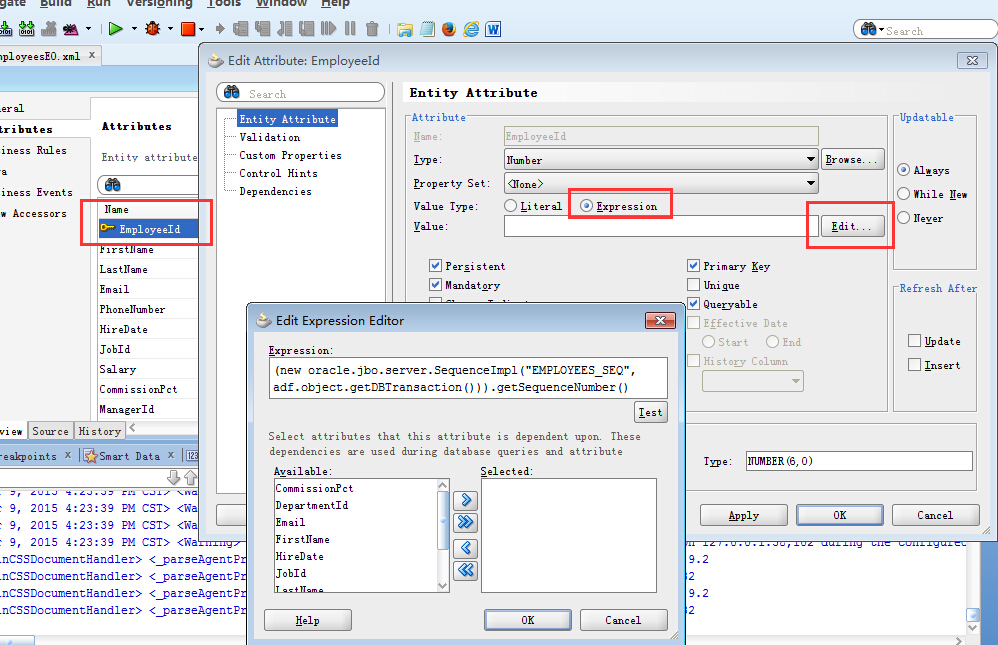
2.先生产EmployeesEOImpl.java文件,后添加自定义的方法如下
protected oracle.jbo.domain.Number nextValFormId(String sequenceName) { SequenceImpl s = new SequenceImpl(sequenceName,getDBTransaction()); return s.getSequenceNumber(); }
然后把 nextValFormId方法注册到Groovy表达式中,入下图
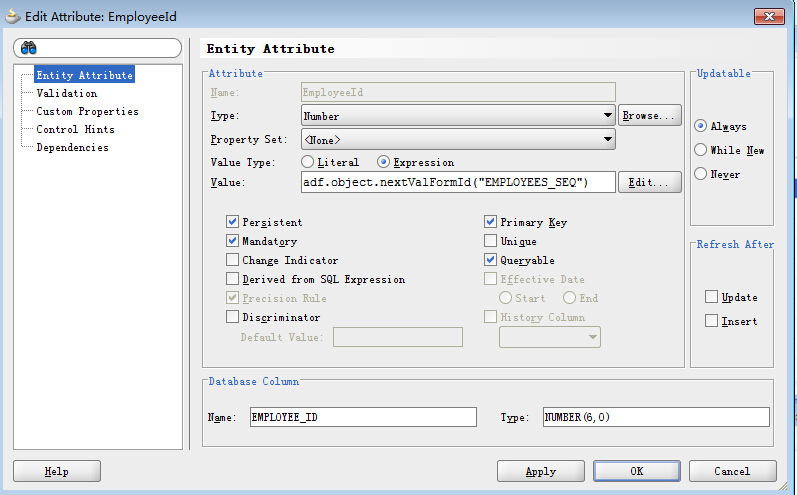
3.在双击EmployeeId,在Custom Properties选项卡中,添加EMPLOYEES_SEQ

然后在EmployeesEOImpl中复写create方法
/** * Add attribute defaulting logic in this method. * @param attributeList list of attribute names/values to initialize the row */ protected void create(AttributeList attributeList) { super.create(attributeList); for (AttributeDef def : getEntityDef().getAttributeDefs()) { String sequenceName = (String) def.getProperty("SequenceName"); if (sequenceName != null) { SequenceImpl s = new SequenceImpl(sequenceName, getDBTransaction()); setAttribute(def.getIndex(), s.getSequenceNumber()); } } }
二.增加验证
1.Attribute Level validationg rule:属性级验证规则,在更新实体属性之前触发
(1).使用内建验证,例如List验证如下
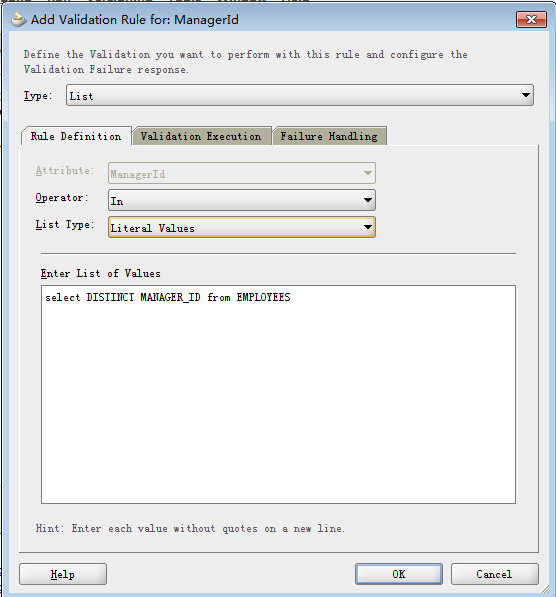
(2).自定义验证
新建一个Validation Rule
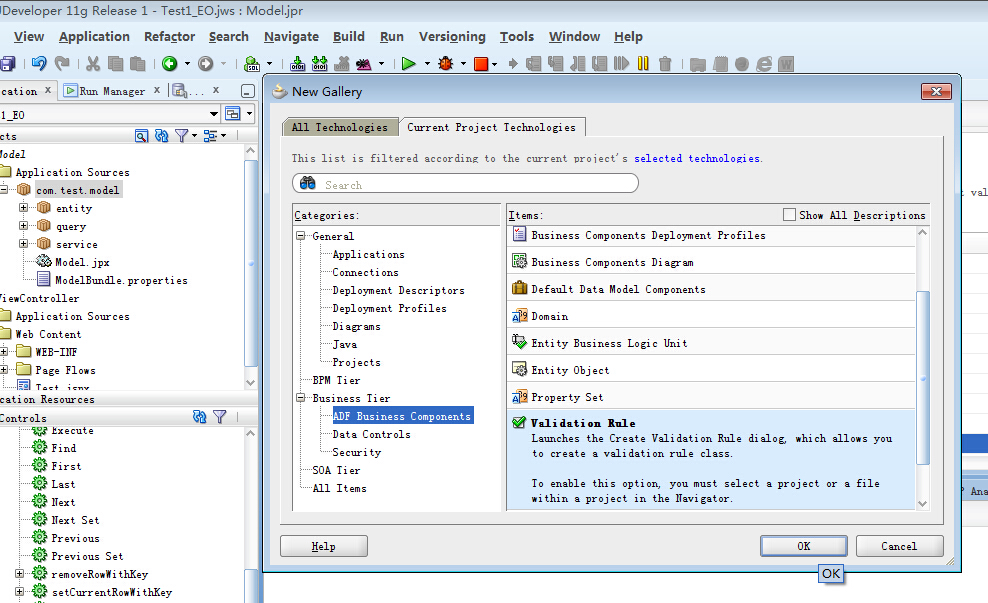
所生产的代码如下,绿色部分就是验证逻辑
package com.test.model.rule; import oracle.jbo.ValidationException; import oracle.jbo.rules.JboValidatorContext; import oracle.jbo.rules.JboValidatorInterface; public class TestValidationRule implements JboValidatorInterface { private String description = ""; public TestValidationRule() { } /** * Return true if value is valid. */ public boolean validateValue(Object value) { return true; } /** * Invoked by framework for validation. */ public void validate(JboValidatorContext ctx) { if (!validateValue(ctx.getNewValue())) { throw new ValidationException("com.test.model.rule.TestValidationRule validation failed"); } } /** * Description of what this class validates. */ public String getDescription() { return description; } /** * Description of what this class validates. */ public void setDescription(String str) { description = str; } }
然后点击EO中的属性,选择
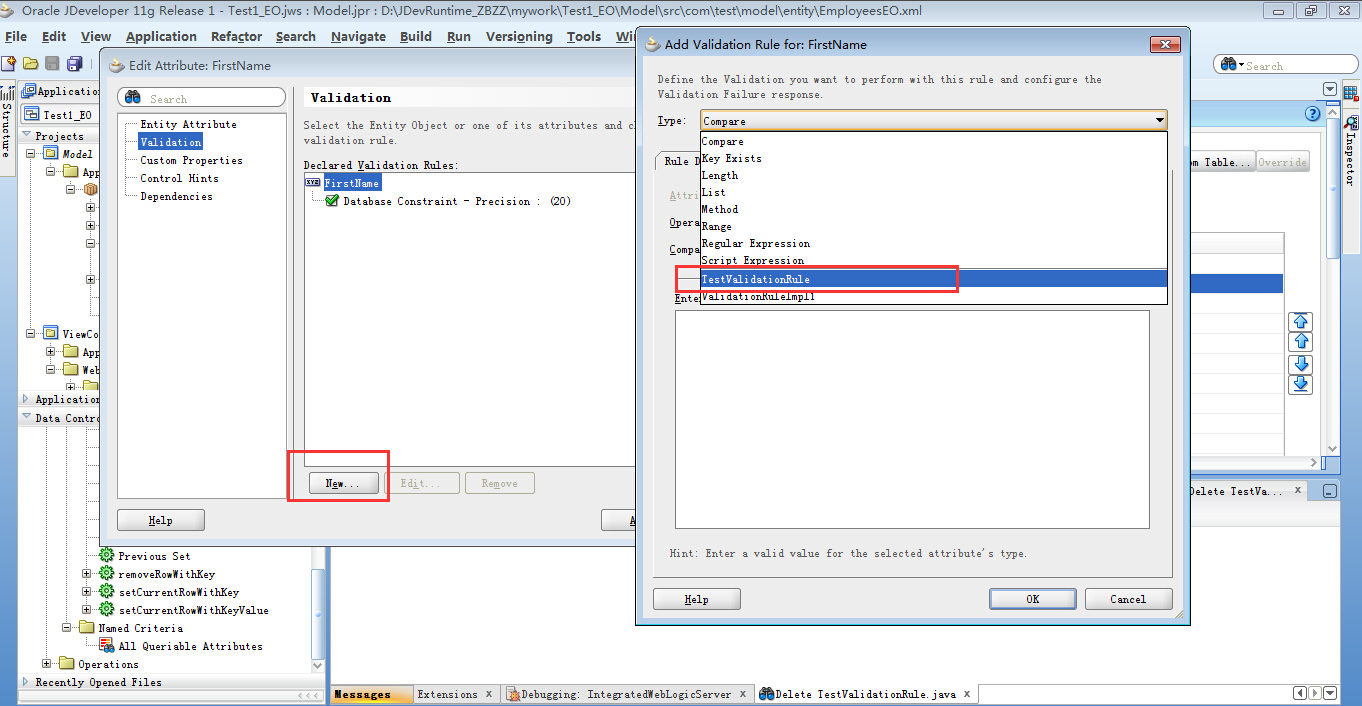
2.Entity Level validation rule:实体级验证,既可以在改变了行选择时触发,也可以在提交事物时触发具体应用
(1).使用内建验证(EO定义xml -->Business rules --> Entity Validators添加按钮)
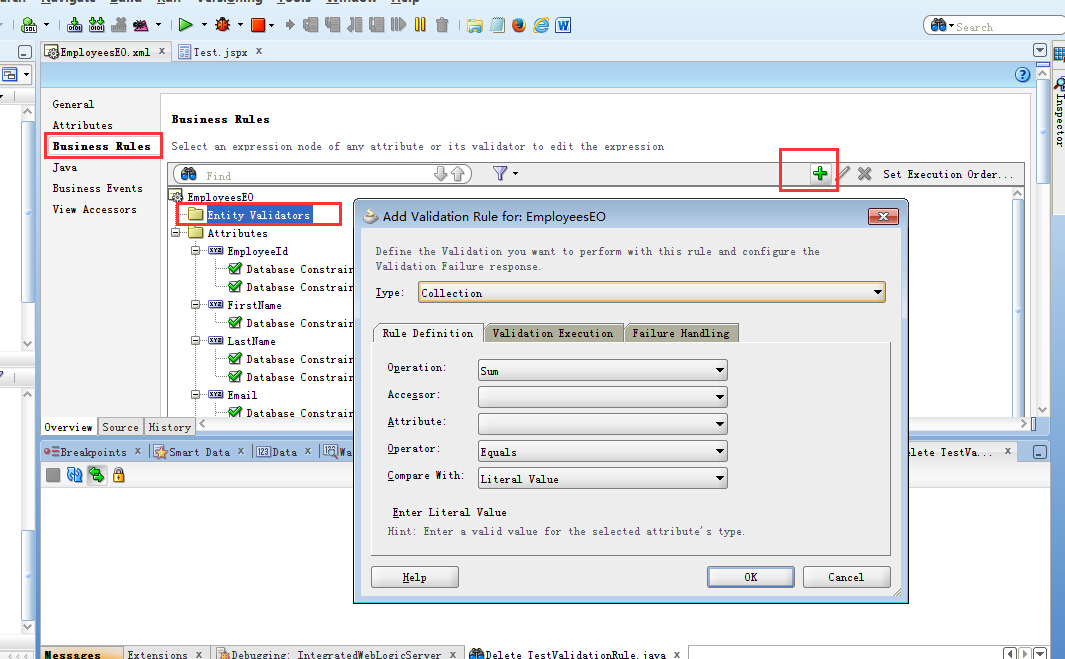
(2).自建验证java类
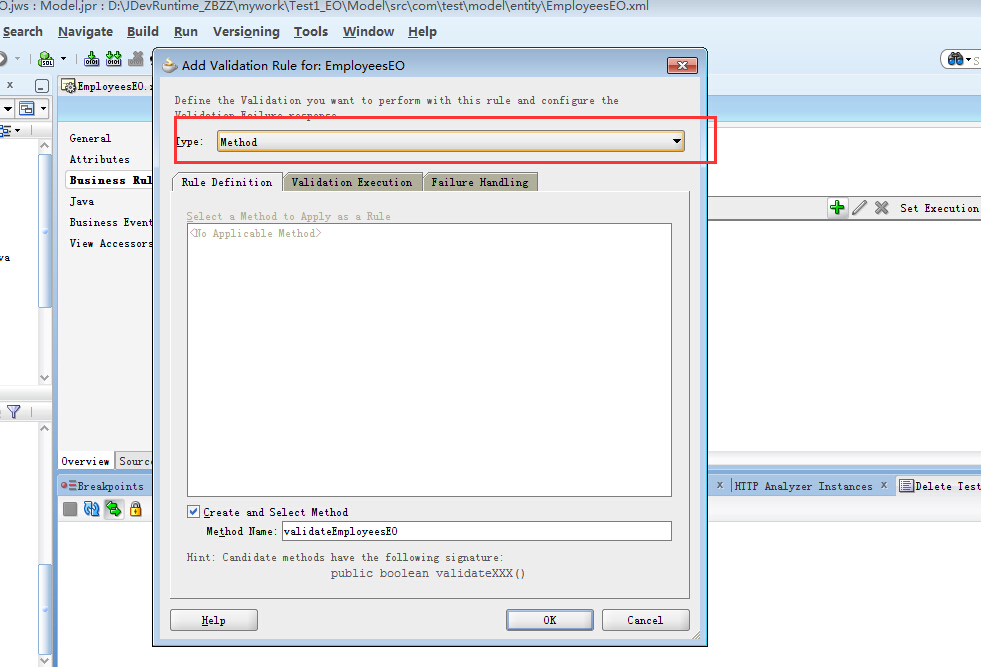
扩展改方法代码如下,必须FirtName为"sun"才能验证通过
/** * Validation method for EmployeesEO. */ public boolean validateEmployeesEO() { if("sun".equals(this.getFirstName())){ return true ; }else{ return false; } }
为该验证注册如下错误消息
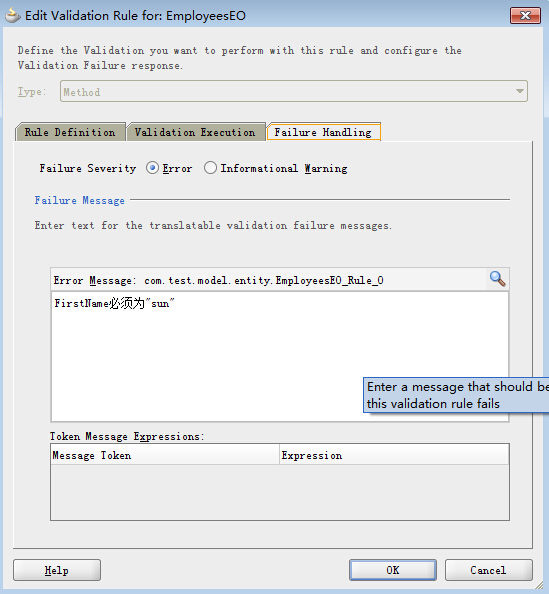
测试结果如下截图
